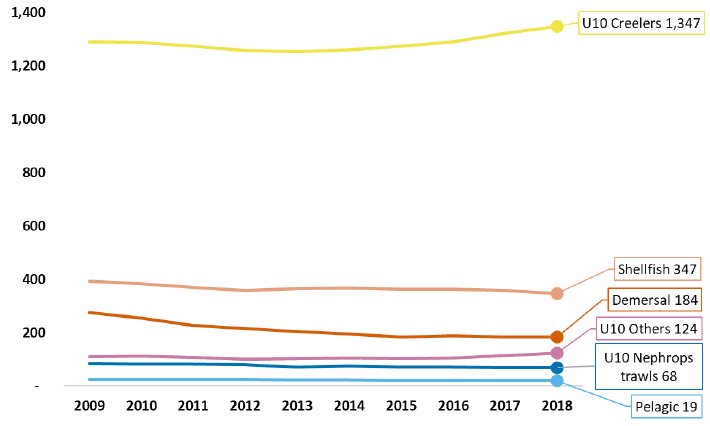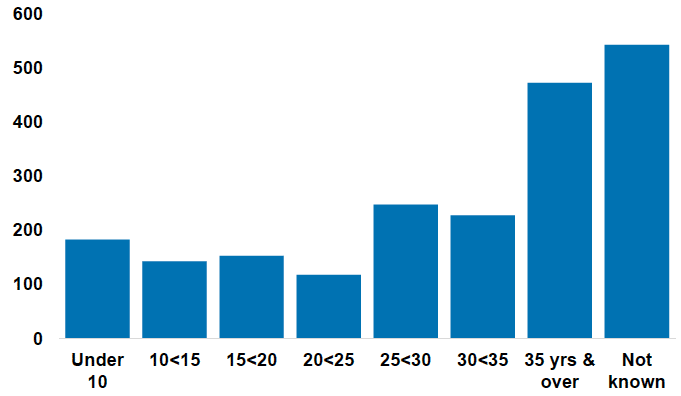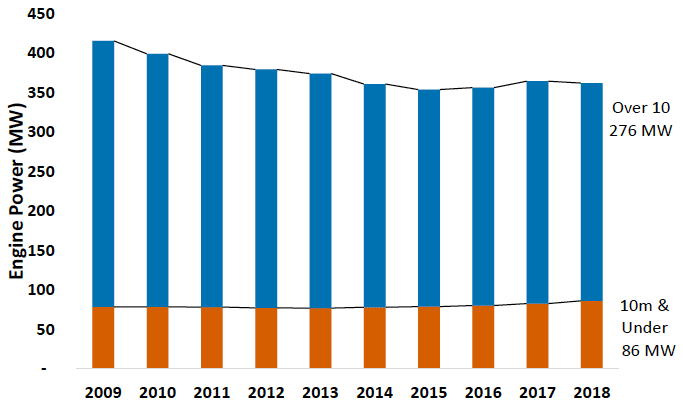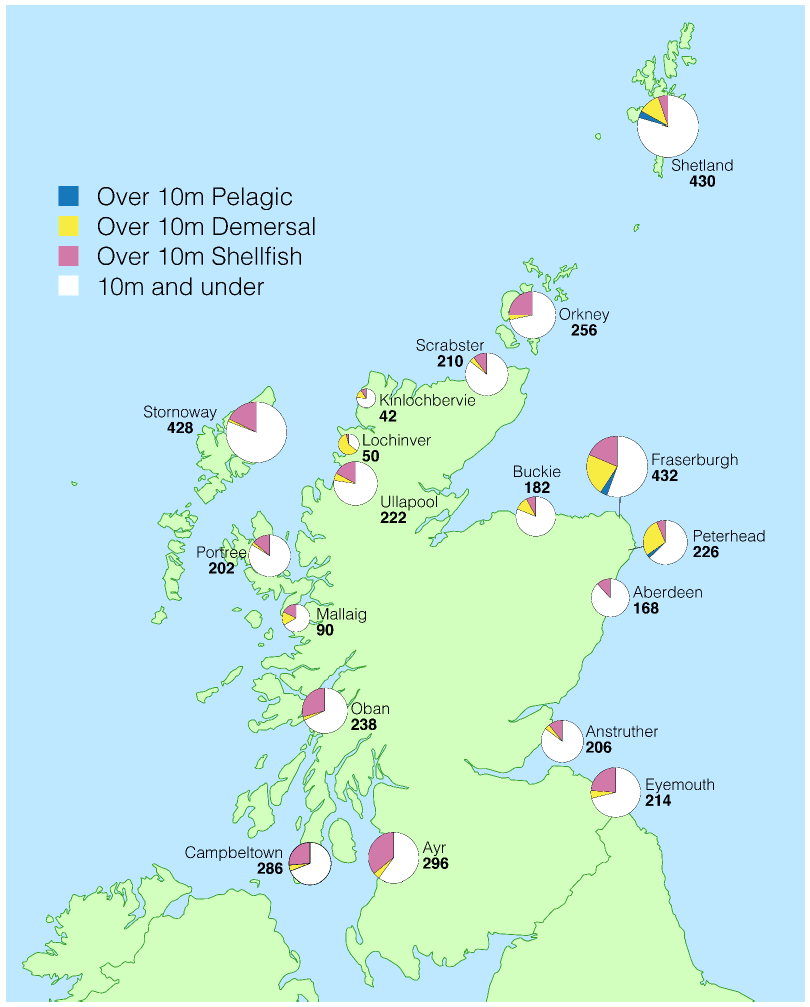Scottish sea fisheries statistics 2018
Tonnage and value of all landings of sea fish and shellfish by Scottish vessels, all landings into Scotland, the rest of the UK and abroad, and the size and structure of the Scottish fishing fleet and employment on Scottish vessels.
This document is part of a collection
4. The Scottish fishing fleet
4.1. Regulation of the UK fleet
UK fishing vessels are required by law to be registered with the Registry of Shipping and Seamen (RSS), part of the Maritime and Coastguard Agency. Fishing vessels must also have a licence that specifies conditions that must be adhered to. For the purpose of this publication, active vessels are those that are both registered and licensed as at 31st December of that year. Scottish based vessels are those registered to a port in Scotland licensed and administered by a Scottish district (see the map in Annex 5). UK fishing vessel licences authorise the sea areas in which a vessel can fish and the species of fish that can be caught.
The capacity of fishing vessels in terms of vessel tonnage and engine power is also controlled through licences. With a finite number of licences in existence and no new licences made available, this places a ceiling on the total number and capacity of vessels in the UK fishing fleet. In order to licence new vessels, fishers must acquire existing licences from other previously licensed vessels.
4.2. The Scottish fishing fleet
The number of active Scottish based vessels has increased to 2,089 vessels in 2018, a one per cent increase (24 vessels) since 2017 and a four per cent decrease (87 vessels) since 2009 (Table 35 and Chart 10). The Scottish fleet is dominated by vessels that are ten metres and under in length with a total of 1,539 vessels falling into this category in 2018, accounting for 74 per cent of the Scottish fleet. 550 vessels are over ten metres in length.
The ten metre and under fleet mostly fish using creels, which are traps in the form of cages or baskets, typically baited and used to catch shellfish. Creels catch some shellfish species such as crabs, lobsters and Nephrops, but other species like scallops can be caught through dredging and Nephrops can also be caught through trawling. In 2018, 88 per cent (1,347 vessels) of the 1,539 ten metre and under vessels were fishing using creels.
Of the 550 over ten metre vessels, 63 per cent (347 vessels) targeted shellfish, whilst 184 (33 per cent) targeted demersal species. Only 19 vessels targeted pelagic species, 16 trawlers and the remaining 3 purse seiners. Creel fishing vessels and Nephrops trawlers form the majority of the over ten metre shellfish group, whilst trawlers dominate the demersal group (Table 37).
Compared to 2009, the ten metre and under fleet has increased by 56 vessels (four per cent) while the over ten metre fleet has decreased by 143 vessels (21 per cent).
Around one quarter of vessels (26 per cent, 543 vessels) in the Scottish fleet are of unknown age. Of those that are known, 479 (31 per cent) are under 20 years old, with an overall average age of 28 years (Table 36 and Chart 12).
Chart 10. Number of Scottish vessels by vessel length group and main fishing method 2009 to 2018

Chart 11. Number of Scottish vessels by age group

Figure 8 and Table 38 show the number of vessels in each of the eighteen administration districts in Scotland. Fraserburgh is the district with the highest number of vessels with 216 vessels (10 per cent of the Scottish fleet). This was closely followed by Shetland (215) and Stornoway (214) districts. A little over half (56 per cent) of the vessels in the Fraserburgh district were in the ten metre and under category, whereas for Stornoway and Shetland districts this was four-fifths of the vessels there. Lochinver is the only district to have more over ten metre vessels (74 per cent) than ten metre and under vessels. In the over ten metre fleet, there are more vessels targeting shellfish on the West coast than in the islands or East coast, whereas demersal and pelagic vessels are concentrated on the East coast.
The total engine power of the Scottish fleet has remained broadly consistent at 362 thousand kW (down 2,300 kW, one per cent change since 2017). The total power of the over ten metre fleet decreased by two per cent to 276 thousand kW and the total power of the ten metre and under fleet increased four per cent to 86 thousand kW (Chart 12). The average power for the over ten metre fleet was 502 kW per vessel in 2018, whereas the ten metre and under vessels had an average power of 56 kW per vessel.
Compared to 2009, average power has seen change in the ten metre and under fleet and the over ten metre fleet, with an increase of ten per cent in the ten metre and under fleet and a decrease of 18 per cent in the over 10m fleet.
Chart 12. Scottish vessel engine power in megawatts by length group 2009 to 2018

Figure 8. Number of Scottish vessels by district by vessel length and main fishing method

Contact
Email: Cameron.Melvin@gov.scot
There is a problem
Thanks for your feedback